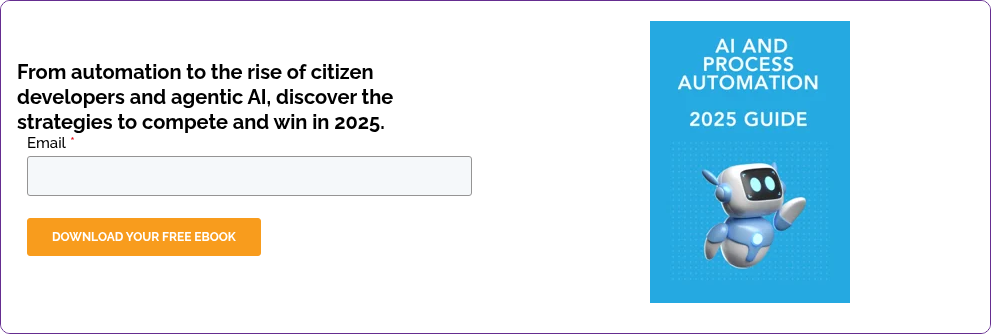3. Data insights will fuel growth
In recent years we’ve witnessed a global spike in data needs regarding accuracy, real-time, and persona-specific reporting views.
Similarly to citizen development automation, non-technical people also want to be able to easily report on their tasks and KPI’s without needing Power BI skills.
A screenshot of the no code FlowForma Analytics feature.
This will be a trend in 2025 and beyond, with citizen developers getting their hands on no code analytics tools which will empower them to:
- Rapidly create dashboards
- Assess processes and make suggestions for improvements
- Rapidly identify bottlenecks
- Gain actionable insights
- Provide C Level with high-level reporting
With companies consolidating their tech stacks, we’ll also see an increased importance on data integration from systems to process automation tools and companies moving away from point solutions to all-in-one solutions.
Governance of data will continue to rise as a focus area, with business process automation tools enforcing data governance policies and procedures.
Find out more about this data insights trend
4. Widespread workflow automation
Workflow automation has been on the rise for a while now, and thanks to the innovations in low code and no code workflow tools over recent years, robotic process automation now have never been more available to businesspeople.
With the global skills shortage, we will see businesses want to digitalize more and more, and departments that have not yet digitalized will have to.
And as customer expectations and competitiveness increases, boards will be requesting increased operational excellence and productivity improvements which can easily be achieved with widespread and automation solutions.
Most of our customers see a snowball effect, once value is created in one department, the rest of the business wants to follow suit.
 For example, The Digital Engineering Lead at Downer New Zealand commented on how they will digitalize across all projects, having seen significant value from their 1st project rollout,
For example, The Digital Engineering Lead at Downer New Zealand commented on how they will digitalize across all projects, having seen significant value from their 1st project rollout,
“We’re going to use FlowForma Process Automation on all our projects,” said Henderson. “It makes my job much easier and saves a lot of time. The only limitation is your own imagination; it can pretty much achieve anything.”
5. Sustainable digital transformation focus
After AI, sustainable automation will be the next big in business process management and automation trends, seeing organizations utilize process automation tools along with AI for ESG (environmental, social, and governance) data collection, tracking, and monitoring against the targets for each.
Investor and regulatory pressure is fueling this reporting growth. Real-time data insights will be key for better decision-making, business transparency, and most importantly accountability.
Many industry reports indicate that ESG reporting for many organizations is still sitting in Excel sheets, taking a considerable amount of time to collect, and is prone to error and inconsistent results.
As more and more directives and legislations come into place there will be a board-level focus on transforming the collection and reporting of this data.
Did you know Gartner predicts that ‘by 2027, 25% of CIO’s will have compensation linked to their sustainable technology impact’?
6. Customer-centric process management
Customer expectations have never been higher, which is why we’re not surprised to see customer-centric process management as a key trend.
Efficiency and agility concerning processes involving customers will be a top priority, organizations will seek to streamline these processes to remove delays and errors and ultimately serve customers better.
Companies will automate and optimize processes to service customers better by:
- Executing processes on time
- Validating data within processes to reduce errors
- Anticipating customer needs better
- Enabling more interactions
- Providing process consistency
7. Creating improved employee experiences with automation
 With competition and skills shortages at an all-time high, improving the customer experiences of our employees is a top priority for employee retention.
With competition and skills shortages at an all-time high, improving the customer experiences of our employees is a top priority for employee retention.
A client recently told me that their automation objective was to ‘remove one hour of admin from each worker per week’, a solid KPI from process automation but a very achievable one which would be well appreciated by their staff who work in a very competitive market.
This business had a focus on removing administration so their staff could do more value-adding tasks and more importantly not have to spend a Friday afternoon buried in paperwork.
Not only did this company achieve this KPI, but they also created an appetite within their workforce for digitalization at scale, another surprise outcome for them was that the reports created from their automated processes have created a competitive streak across teams and departments. What a great result and proof that BPA software can achieve the results needed in today's hyper-competitive landscape.
With FlowForma Copilot, organizations can accelerate onboarding faster than ever before. In this interactive demo, see Copilot build an onboarding process in minutes.
8. Compliance via automation
With the advancement of AI and increased security concerns, we can expect to see increased attention to compliance.
Many companies I speak with already use automation tools to streamline processes and make compliance easier concerning the General Data Protection Regulation (GDPR), the International Organization for Standardization (ISO), and many more industry-specific regulations
9. Ethical automation
I expect to see a trend in which organizations will increase their creation and implementation of responsible standards and best practices to continue to ensure that their automation efforts and AI uses are ethical.
10. Agentic AI
I recently hosted a webinar featuring two leading experts in AI-driven process automation: Gerard Newman, CTO of FlowForma, and James Corcoran, Head of AI and Analytics at STAC. In the webinar, we discussed how agentic is set to transform organizations in 2025. From making process automation faster, to bringing intelligent workflows to life and recommendations to make your processes smarter, agentic AI will be the key trend to follow in 2025.
Watch the video to see us discuss this critical trend.
Conclusion
There are some very positive movements in the business process automation market regarding citizen development and AI and those who excel in these areas are going to create brilliant cultures for staff, and amazing experiences for customers overall their operational efficiency and data efficiency will give them that competitive advantage. Flowforma is the ideal choice that caters all the recent updates in the realm of Business Process Automation
 By
By 
.png?width=235&height=235&name=Business%20Process%20Automation%20Trends%20in%202024%20(1).png)
.png?width=304&height=304&name=Business%20Process%20Automation%20Trends%20in%202024%20(2).png)






